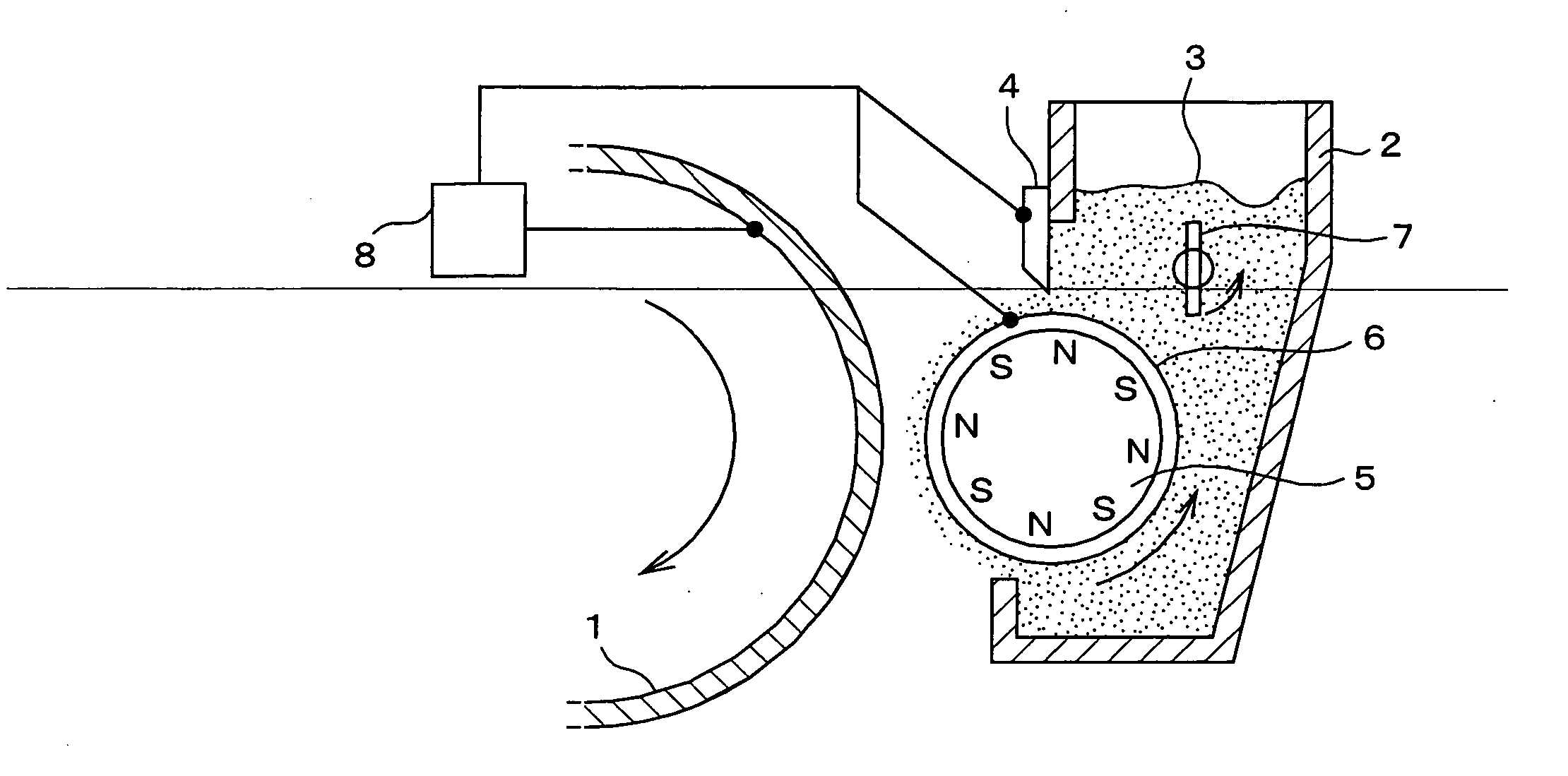Electrophotographic toner and method of development therewith
- Summary
- Abstract
- Description
- Claims
- Application Information
AI Technical Summary
Benefits of technology
Problems solved by technology
Method used
Image
Examples
example 1
Preparation of Toner A
[0045]
Cyclo-olefin copolymer resin (trade60parts by weightname: TOPAS COC, produced byTicona GmbH, ethylene-norbornenecopolymer)Fischer-Tropsch wax (trade name:4parts by weightFT-100, produced by Nippon Seiro Co.,Ltd., melting point: 92° C.)Charge controlling agent (trade1part by weightname: T-77, produced by Orient ChemicalIndustries, Ltd., 2:1 type ironcomplex salt monoazo dye)Magnetite (trade name: EPT-1000,35parts by weightproduced by Toda Kogyo CORP.)
[0046] Raw materials having ratios shown above were premixed by a super mixer for 10 minutes, heat melted and kneaded by a biaxial extruder at a rotation speed of 150 rpm, pulverized by a jet mil, and classified by a dry-type air flow classifier, to obtain toner particles having volume average particle diameter of 8 μm.
[0047] 0.5 wt % of hydrophobic silica (trade name: R-972, produced by Nippon Aerosil Co., Ltd., primary average particle diameter: 0.016 μm) and 0.5 wt % of the weight of the toner particle of...
example 2
Preparation of Toner B
[0048] Except that the preliminary mixing by the super mixer was performed for 5 minutes, Toner B of the present invention was obtained in a manner similar to that in Example 1.
example 3
Preparation of Toner C
[0049] Except that the preliminary mixing by the super mixer was performed for 15 minutes, Toner C of the present invention was obtained in a manner similar to that in Example 1.
PUM
| Property | Measurement | Unit |
|---|---|---|
| Percent by mass | aaaaa | aaaaa |
| Percent by mass | aaaaa | aaaaa |
| Mass | aaaaa | aaaaa |
Abstract
Description
Claims
Application Information
 Login to View More
Login to View More - R&D
- Intellectual Property
- Life Sciences
- Materials
- Tech Scout
- Unparalleled Data Quality
- Higher Quality Content
- 60% Fewer Hallucinations
Browse by: Latest US Patents, China's latest patents, Technical Efficacy Thesaurus, Application Domain, Technology Topic, Popular Technical Reports.
© 2025 PatSnap. All rights reserved.Legal|Privacy policy|Modern Slavery Act Transparency Statement|Sitemap|About US| Contact US: help@patsnap.com



